
Seasoning companies have many channels, among which the catering channel occupies about 50% of the market share. So in the current market environment, how can seasoning companies achieve sustainable growth in the catering channel?
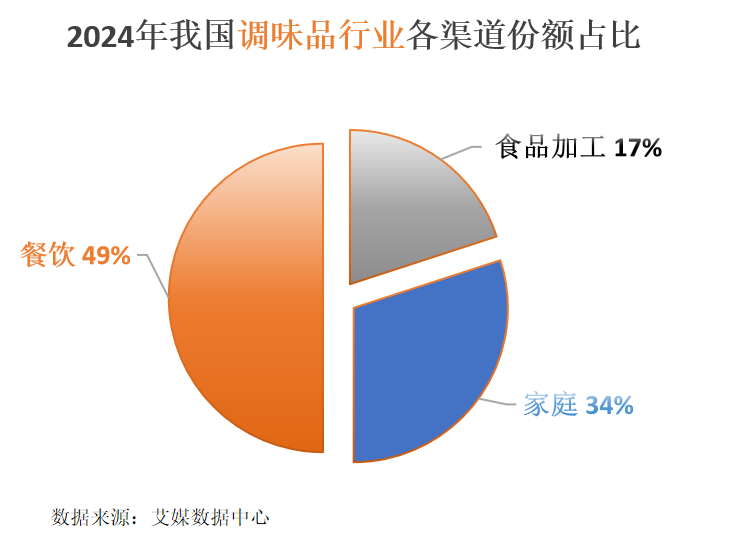
01
Leverage Distributor Power
Maintain and Expand Catering Terminals
Knowing that the catering channel has a large market share, who should cover so many catering terminals? The distributor or the manufacturer themselves?
First, let’s understand how the seasoning industry covers terminals.
↓↓↓
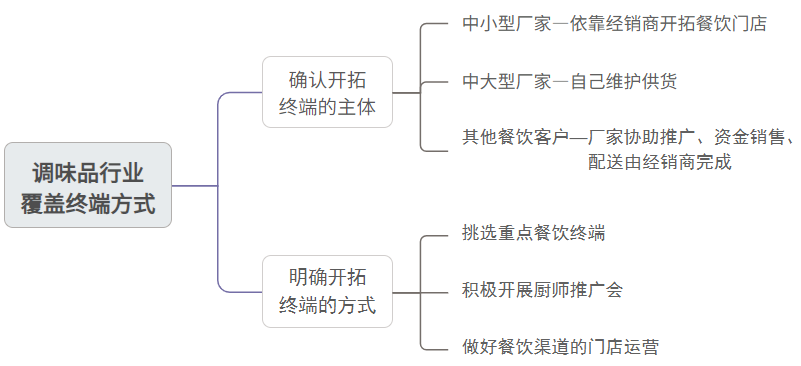
Before manufacturers cover catering terminals, they must first clarify who is responsible for expanding terminals, whether it is the distributor or their own sales staff.
Small and medium-sized manufacturers with limited sales staff rely on distributors to develop catering stores. In contrast, large manufacturers need to maintain supply directly for large catering chains; for other catering clients, generally, the manufacturer’s sales representatives assist distributors in market promotion, with funding and distribution handled by the distributors.
Once the sales model is determined, various ways can be used to connect with catering terminals.
First, focus on key catering terminals that are thriving, large-scale, and have a good market influence in the region. Because they have many customers, their dishes are often imitated by consumers, and the seasonings behind those dishes are easily noticed; they will also attract competitors to imitate the dishes and cooking methods, thus driving demand for corresponding seasonings in other restaurants, making it necessary to set up core catering stores.
Second, chefs are crucial in the catering channel. By holding chef promotion meetings and establishing connections with chefs, manufacturers can guide them to innovate dishes using their products, effectively “implanting” the products in the chefs’ minds. For example, when a leading seasoning brand entered a new market, it leveraged well-known chefs to create dishes with its products and used media to amplify the event, influencing more chefs and retailers.
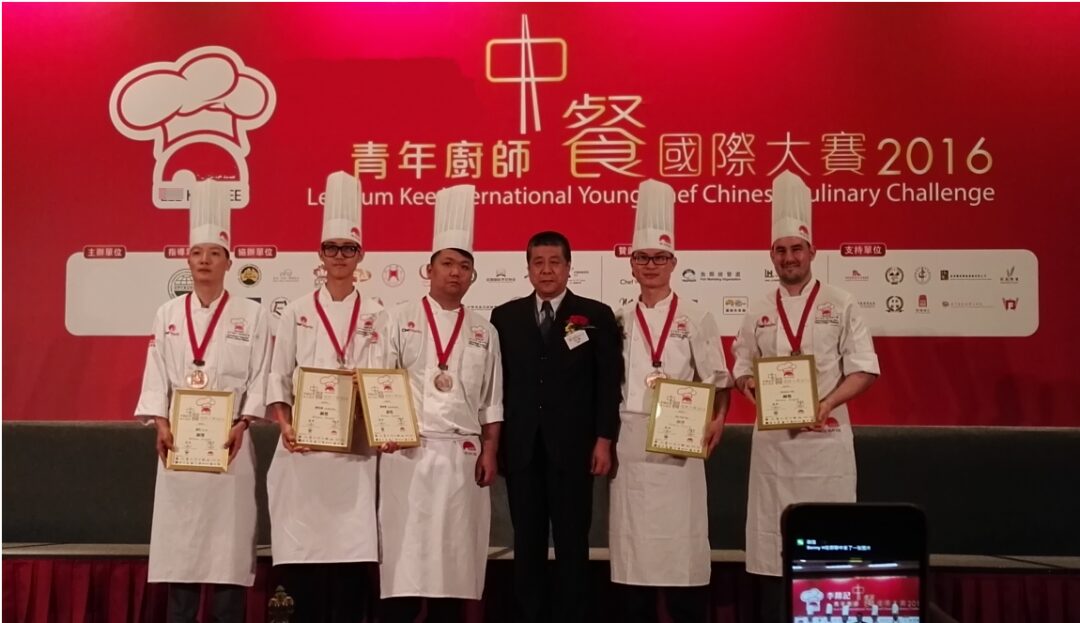
Finally, it is essential to manage store operations in the catering channel. First, clarify accounts receivable, as this is an uncertain factor in operations; suppliers need to manage it well to prevent bad debts. Second, products should be categorized, as catering terminals use various types of seasonings, and companies should explore the demand deeply and introduce more product lines. Third, maintain good customer relationships, as stable relationships with catering terminals are crucial; non-chain companies often change suppliers due to customer relationships, so internal personnel at the terminals need to be maintained.
02
Personnel Management in Five Steps
Cover More Terminals
To achieve effective coverage and in-depth operation of catering channel terminals, scientific and rational personnel management is crucial, which can be achieved through the following five-step strategy.
Step 1: Set Goals. Based on market research and analysis, reasonably determine the daily visit volume for retail terminals and wholesale outlets; for example, visit 35 retail terminals daily and 5-10 wholesale outlets daily to ensure orderly advancement and efficient execution of market expansion.
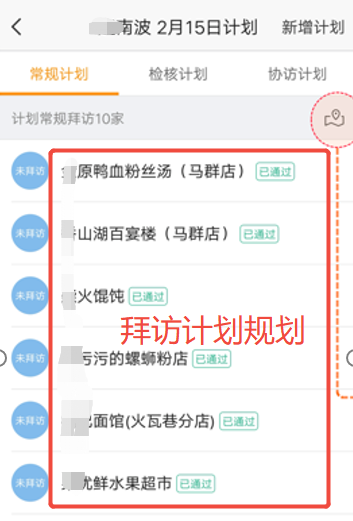
Step 2: Group and Assign Personnel. Based on a detailed list of catering retail stores in the area, group the customers and assign fixed personnel to follow up, ensuring that each store has a dedicated person responsible.
Step 3: Pre-set Routes. Integrate with Baidu Maps and Amap to carefully plan visit routes for business personnel, improving visit efficiency and resource utilization. Conduct periodic visit management based on the priority of the stores.

Step 4: Standardize Actions. Develop detailed visit processes and operational standards for business personnel at different types of stores, specifying what actions to take upon entering, what photos to take, and standardizing everything to ensure service consistency and standardization.
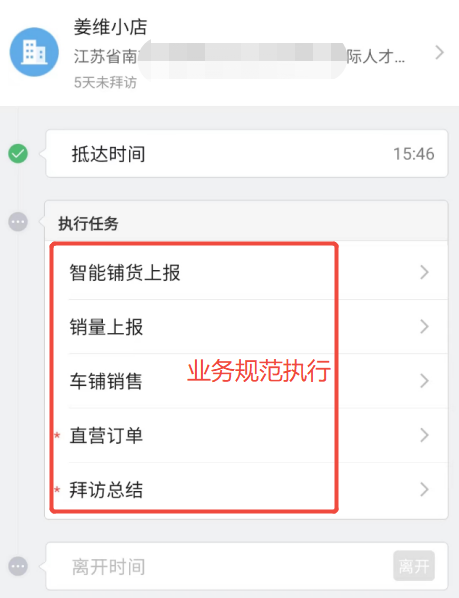
Step 5: Report Analysis. Establish a comprehensive reporting system to track and analyze key indicators such as visit rates, visit counts, cooperation rates, and retail outlet distribution data in real-time. Use data visualization tools to present market dynamics and business progress, providing precise decision support for management to timely adjust market strategies and personnel deployment.
03
Leverage AI Technology
Assign More Accurate Levels and Labels to Terminals
The application of AI technology has brought revolutionary changes to the refined management of seasoning companies in the catering channel. Through the collection and in-depth analysis of multi-dimensional data, AI systems can conduct comprehensive and detailed classifications of terminals. From the visit data dimension, it can identify different activity levels of customer groups, such as those not visited for 30 days or those who have not placed orders for 7 days; from the purchasing data dimension, it can accurately categorize customers based on their purchasing scale and frequency levels; from the store attribute dimension, including store levels (high-end, mid-range, low-end), size, location quality, service level, per capita consumption, parking facilities, etc., generating a unique labeling system for each terminal.
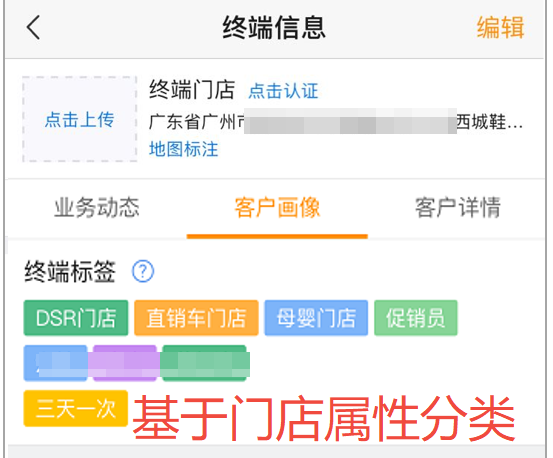



Swipe left and right to see more

Based on this precise labeling management, companies can intuitively gain insights into the distribution and dynamic changes of various terminals, quickly identifying core customers, growth customers, and potential problem customers.
If seasoning companies want to seize the initiative in the catering channel, they must comprehensively integrate resources, leveraging distributor power, optimizing personnel management, and applying AI technology across multiple dimensions, continuously innovating and improving business strategies to adapt to dynamic market changes and fierce competition, providing consumers with higher quality seasoning products and services, and promoting the continuous prosperity and development of enterprises in the catering channel.

Recommended Reading
As the year-end peak season approaches, how can brand owners seize the market and enhance product distribution rates? This method is sufficient!
Low-temperature milk over the past nine years: how small distributors won their big comeback?
Ground display: the magical magic and management secrets of terminal promotions
Should activity expense applications be approved? Use Qince’s “Smart Approval” for accurate and quick decision-making!
Launched with great fanfare! Qince connects with DingTalk for efficient collaboration!
In the era of volume reduction, all-channel management in the fast-moving consumer goods industry is supported by “one code for one item” marketing.